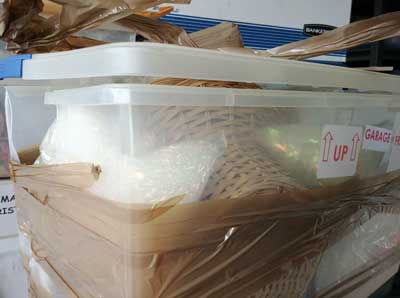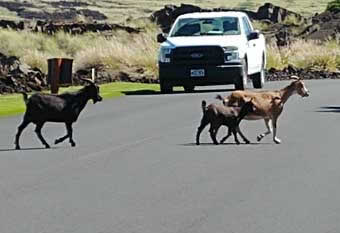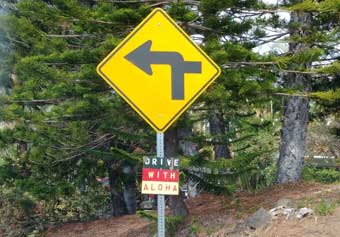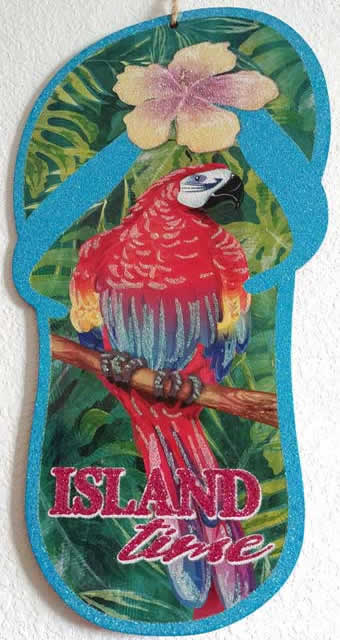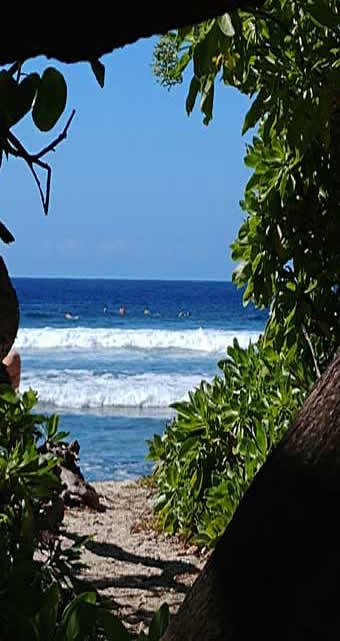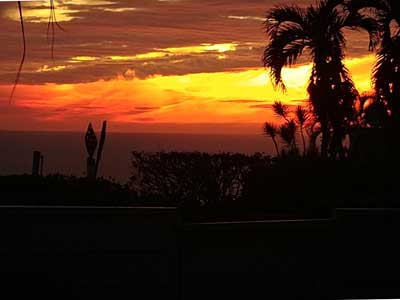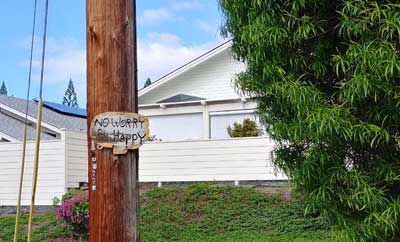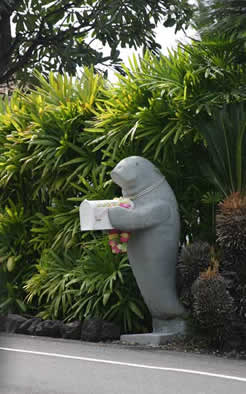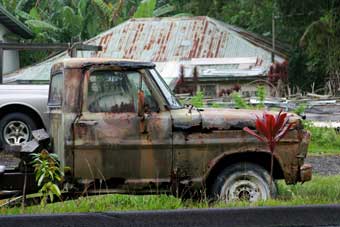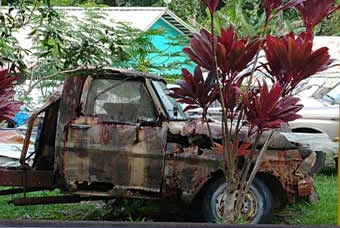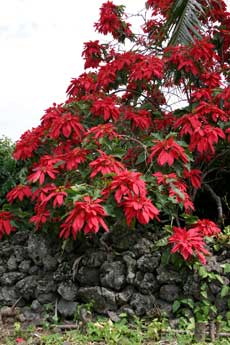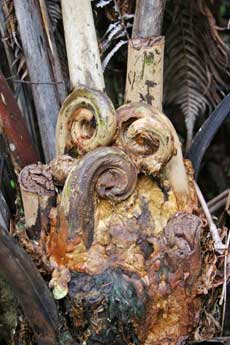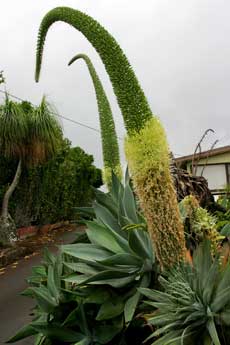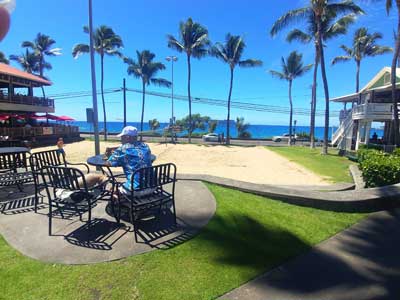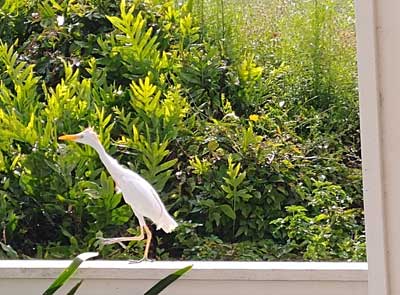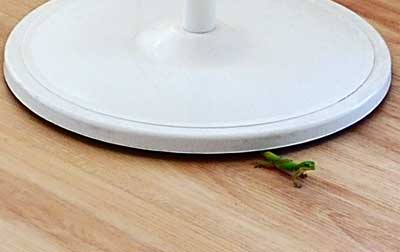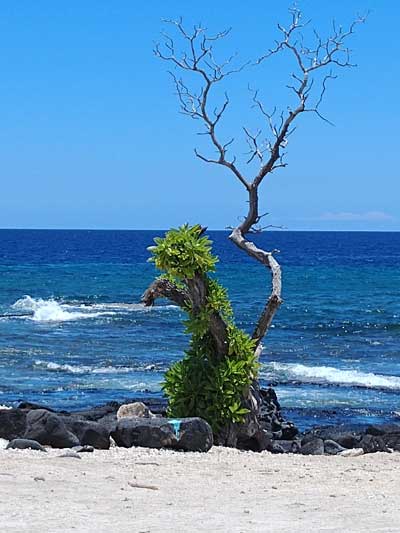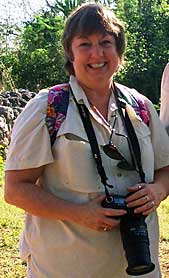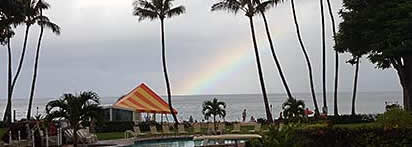 |
|
A YEAR IN PARADISE |
|||
Story and photos by Vicki Hoefling Andersen |
|||
“So you moved to ‘paradise’... what’s it like to actually live here?” It doesn’t really matter if it’s a ski trip in the Rockies, a weekend boating your favorite lake, or time spent just watching waves roll in and out, at some point everyone dreams a little bit of “what if...?” That’s a question we get nearly every time we encounter visitors, inevitable when more than ten million folks a year descend upon the Hawaiian islands from nearly every corner of the globe. And it’s not uncommon to see them with a “real estate for sale” booklet in hand, dreamy-eyed about not having to board that flight or cruise ship home. In the case of Hawaii, it is alleged if your spirit is not a good fit for the land, the island will reject you. We’ve heard many tales of folks who arrived with high hopes but fled back to the mainland after a year or two. Sometimes a little more insight into the reality of “living in Paradise” might help.
Expect that everything won’t arrive as it should, or may never be seen again. No matter how carefully packed, a week or two bouncing atop the biggest ocean on the planet can take its toll. I must have packed pretty well because among our 45-foot container-load of possessions only one glass bowl and a large Talavera planter arrived broken. I didn’t really expect the planter to survive which is why I left a half-dozen behind. Don’t assume everything will make it - broken or not - to your door. A few boxes were MIA and some things were damaged by the movers (Sterlite totes are not impervious to being dropped). Driving is likely a whole lot different than “back home.” There are no freeways on Hawaii Island - which is a welcome change - and only a few “main” roads and highways. Kona, for instance, has three north-south routes through our town: Ali’i Drive winds along the coastline for 12.5 miles and terminates “downtown” at the Kailua Pier; 3.3-mile long Kuakini Hwy whose “highway” status is a bit glorified and ends only a few blocks north of Ali’i; and Hwy 19, aka Queen Ka’ahumanu Hwy, which actually runs all the way to the north tip of the island, a bit over 50 miles. In many large cities you’d barely be across town!
Perhaps the nicest thing about driving is the absence of horns, the local mind-set being “only tourists honk,” although a bit of a toot helps when herds of wild goats or donkeys decide they can’t wait for the light to change. It helps once you understand Island lingo. Local newscasters do not refer to the contiguous United States as “the Mainland;” it’s “the Continent.” On an island consisting of five volcanoes, no matter where you are, the directions are “mauka” or towards the mountain and “makai” or towards the ocean. The northern portion of the island is blessed/cursed with nearly endless wind hustling down the slopes of Maunakea and the Kohala mountains, so locals have affectionately nicknamed the town of Waimea as “Windymea” and the village of Waikoloa as “Waikoblowa.” Yes, you will need to hang onto your hat.
The phrase “Island Time” conjures up visions of sun, sand and sunsets and that does happen. You might grab some takeout, back into a tree-shaded spot edging the white sand at Pine Tree beach, and laze away a couple of hours watching the surfers and talking story with locals and visitors alike.
Friday evening is Pau Hana time, Hawaiian for “work is finished” and an excuse for a few neighbors to gather in front of our house and celebrate. Sitting at a 300-foot elevation but only three-quarters of a mile as the myna bird flies from the ocean (remember all those volcanoes that make up the island?), our unobstructed views to the west and south allow enjoying another striking sunset, watching the night sky come alive, counting boat lights on the water, and tracing the space station as it passes overhead. Island Time implies slowing down and that includes doing commerce. Nearly every business has a “help wanted” sign and some are extremely short staffed. The Kona and Kohala Coasts are examples of the challenge many vacation destinations face: workers often can’t afford to live within a reasonable commuting distance of their jobs. Many folks live on the opposite side of Hawaii Island but work in Kona. Some take the cross-island bus with its numerous stops, others make the nearly two-hour drive each way. And that’s assuming Mauna Loa isn’t spewing rivulets of lava across the highway forcing a longer route. But everyone seems unfailingly cheerful and does their best, which is usually pretty darn good.
Island Time can also be a major pain as I’ve well learned from purchasing a home and waiting for the mail. We’d educated ourselves on the Biggies: lava zones, areas prone to flooding and tsunamis, severe earthquake areas, off-the-grid locales with no water or electric service but incredibly affordable prices. But we did not know about Hawaii’s unique feature called Land Court. I won’t delve into its history but you can thank the land-grab mentality when America took over a sovereign nation. Our purchase breezed right through the title company, but the time period from offer acceptance until closing took nearly five months. Fortunately our realtor worked a deal so we could rent the already-vacated home until it closed. There was no issue on our end of the transaction but there was on the seller’s end ... oh my. For various reasons Land Court rejected the sale a total of eight times before they were happy with the seller’s paperwork, and we started to wonder if the Island was trying to tell us something. Both of our realtors, fellow agents they knew, and the escrow folks said it was the longest closing they had ever heard of. Lucky us.
Garages are essential if you don’t want the sun’s rays to scorch your vehicle’s paint to dust or the rain’s acidity to devour the metal. Not surprisingly, the local car wash has a popular monthly “unlimited washes” plan. Local weather folks refer to “pop-up showers” which may or may not show on radar, with bright overhead sunshine usually glistening through the droplets. I’d hoped for a bit of yard to continue “puttering” but quickly realized the “low maintenance” I was used to in the Pacific Northwest isn’t possible in a tropical climate. But - I don’t have rhododendrons to dead-head in the spring and weeks of leaf raking in the fall. I’ve learned to love the little ferns that grow through the river and lava rock piled in the flowerbeds to discourage such upkeep, and not sweat every weed reaching for some life.
Bougainvillea, plumeria, orchids and hibiscus fragrance the air year-round, but remarkable flora such as tree-sized Poinsettia, Hapuu fern and Agave Attenuata and are a feast of contrast. Even though I will probably never understand, there are some things I’ve learned to accept - such as what items you can and cannot order and have shipped. You can’t order a BBQ striker but a 10-pack of BIC lighters is fine. Hair coloring is a no-no but the same product as “root touch-up” works. Replacement batteries for a Ring device won’t ship but a Ring product with battery included will. Live plants from a nursery on Kauai can’t be sent to Hawaii Island but flora from Tennessee are okay. Weirdest was arriving here with my set of can lid toppers, those plastic thingies you snap on your pop can, flip the tab up to drink, but maintain carbonation and keep the bugs out. After using them for years on the “Continent,” they no longer fit. Did they shrink during shipping? Ordered some new ones. Nope. After doing some research (also known as “Googling”), I learned that back in the 1980s the diameter of pop cans changed, shrinking 0.25 inches around the rim in an effort to save aluminum. This happened in all U.S. states ... except ... Hawaii. The change-over was so expensive for can-makers and bottlers, the facility on Oahu is now the last one in the country to continue producing the original-sized cans so as to accommodate the equipment used by Hawaiian beverage bottlers.
Hubby, who had lived his entire life within a ten-mile radius of where he was born, loves being here and everything about Hawaiian culture, but struggles with Hawaiian place names and phrases. When I reminded him that until 125 years ago, 1895 to be exact, this was a foreign country, his appreciation and understanding grew even more. Yes, Hawaii can be expensive, but when you learn where to dine and shop, it can be affordable. Farmer’s markets and roadside stands are great options, some places have “frequent buyer” cards, and many businesses offer a “kama’aina” or locals’ discount if you live here. But make note of expiration/shelf-life dates because things take time to ship and get distributed throughout the islands and likely aren’t as fresh as you’re used to. Endless options for no-cost adventures could be; snorkeling a pristine coral reef or belly-boarding waves with the dolphins and turtles; hiking or biking through thick forests, across lava fields, or along windswept coastal trails shaped by early Hawaiians; wandering fields of petroglyphs carved by the ancient inhabitants of these islands, or among their sacred places constructed of massive stone works. Event calendars for local resorts and shopping centers include complimentary hula shows and other entertainment. Frequent and numerous artesian fairs offer the chance to meet and talk story with the creators of wonderful artwork and handicrafts, and offer locally-produced honey, jams, teas, Kona coffee, and unique baked goods and candies.
A tropical climate includes bugs, inside and out, but quarterly visits from pest control plus periodic peppermint oil spraying around the doors and windows keep them mostly at bay. The critter that has always given me chicken-skin are centipedes and millipedes, the latter of which are more prevalent than house flies. Hawaii has three species of centipedes including the Vietnamese, which can grow ten inches long and an inch wide, is really (really) fast, equipped with sharp venom-injectable claws, and very occasionally also make their way indoors. The 19 species of cockroach aren’t really a problem except when a 2” American comes flying in the door. I’ve learned the best way to handle American and Vietnamese intruders is quickly and firmly - but gently - grab them with long metal tongs, run for the kitchen sink, turn on the faucet and garbage disposal, and spend the next 60-90 seconds frantically keeping them from exiting before the whirling blades convert them to mincemeat.
Seven types of geckos live in Hawaii, none of them native, and while some locals consider them pests and try to kill them, others folks feed them. They’re particularly fond of apples, bananas, and papayas, a clue as to which category I fall into. Some of the little guys eat cockroaches and ants while others dine on spiders and centipedes, and can be highly territorial and claim a part of your house as their own. We’re careful not to leave food or crumbs around, but one fellow has been hanging around the kitchen for so long I’ve named him Fred. It drives our poor dog crazy trying to figure out who I am talking to. Nothing seems to faze Fred, even when I almost set a frypan on his tail, he didn’t scurry off, so I guess he’s also decided we belong here.
So what’s it really like living in “paradise?”Short answer: Unbelievable. Long answer: Eye-opening, sometimes frustrating, and immensely rewarding all at the same time. Despite the year we’ve been through and knowing more challenges still lie ahead, yes we would do it again. It’s the most amazing adventure we have ever had and it continues every day. If you haven’t already, I hope you can find and follow your Paradise. ABOUT THE AUTHOR
|
